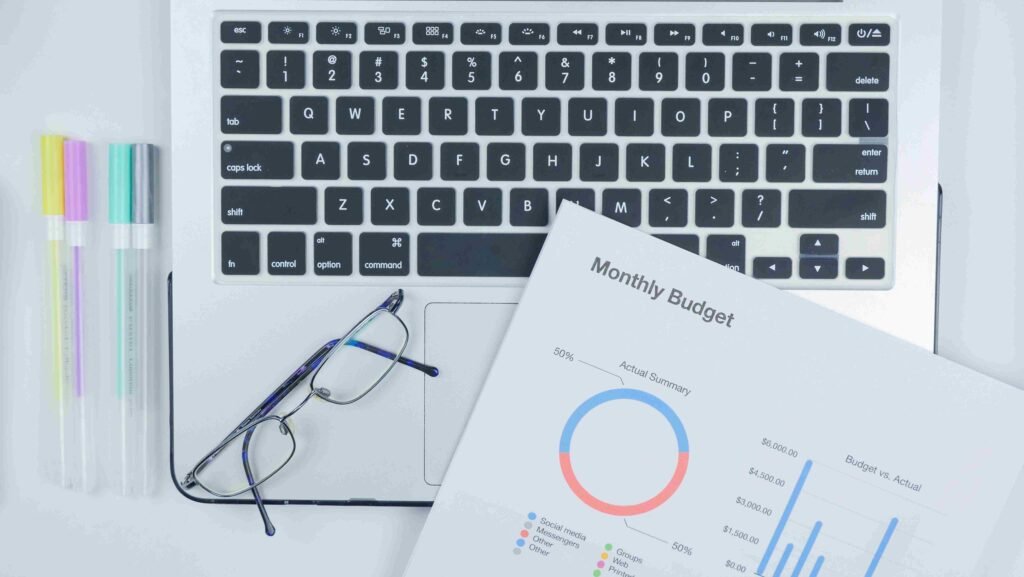Budgeting. It’s one of those things that people love to hate. But the truth is, it’s also one of the most important things you can do for your financial health. A budget can help you stay organized and on track financially, and it doesn’t have to be complicated or time-consuming.
A 2013 poll revealed that only 32% of Americans maintain an actual budget. And less than 40% of them have long-term savings and investment goals. To avoid making yourself susceptible to failure, it’s essential to be realistic about what you can achieve. You don’t want to raise your goals so high that they’re difficult to reach.
In this blog post, we’ll guide you through a step-by-step process for creating your personal monthly budget. We’ll also provide some ideas to help you stay motivated and accountable.
So, whether you’re just getting started with budgeting or you’ve been frustratingly unsuccessful in the past, this blog post is for you. Continue reading to learn everything you should about budgeting!
Why Should I Create a Monthly Budget?
You may ask, “why is budgeting so important to my financial well-being?” The answer: it helps you control spending, track expenses, and save more money! You can make better short-term decisions and prepare for any future emergencies that may come up! When you have a monthly budget, it’s easier to be smart with your money.
You should also create a monthly budget for the following reasons:
- It provides a way to stay on top of your finances and avoid the stress that comes with not having enough cash
- It can help you identify problem areas with your spending habits and make necessary changes
- It allows you to set financial goals and track your progress over time
- It shows you how much money you can safely spend each month

How to Create a Budget: 5 Easy Steps
Now that you know the importance of budgeting, let’s walk through how to create your monthly budget. We’ll break it down into five simple processes.
#1. Figure out your net income
Before starting budgeting, you need to figure out your net income. That’s the amount you take home after deducting taxes and any employer-sponsored programs like retirement plans or health care insurance.
If you’re a single salaried employee, the paystub should show you your monthly net income. In a case where your paycheck comes in on the 15th and 30th of every month, multiply the amount you receive by two. Are you paid biweekly? Divide your salary by 12 after multiplying by 26.
If you’re a contractor or receive income in other ways, you’ll need to do a little more work to calculate your monthly net income. To get started, use this helpful online calculator.
#2. List your regular expenses:
Once you have your net monthly income, it’s time to list your regular expenses. This should include your monthly bills, such as rent or mortgage payments, car payments, utilities, groceries, and debt payments. It helps to categorize your expenses into fixed (ones that stay the same each month) and variable (ones that are likely to change).
Some everyday fixed and variable expenses include:
Fixed expenses:
- Rent or mortgage payment
- Car payment
- Utilities (electricity, water, gas)
- Insurance payments (car, health, home)
- Phone, cable, internet, and other monthly subscriptions
Variable expenses:
- Grocery shopping
- Entertainment (movies, concerts, dining out)
- Clothing and personal care items
- Household goods
- Dining
- Travel
- Other miscellaneous activities
#3. Pay yourself: savings and investments
If you’re like most people, then before spending your discretionary money (the fun stuff!), you need to set financial goals and plans. This way, when the inevitable happens-you will at least be prepared!
After identifying how much money is going out each month, you’ll need to start thinking about how to save and invest that money. Experts recommend setting aside at least 20% of your income for savings and investments.
Ideally, you’ll want to save for both short-term and long-term goals. Short-term goals may include building an emergency fund, saving for a vacation, or purchasing a new car. Long-term goals on the other hand include saving for retirement or investing in stocks or mutual funds.
If you’re unsure how to start saving and investing your money, many online resources can help you get started. A few good places to begin include:
The Financial Diet – This website offers helpful tips for creating a budget, saving money, and investing for beginners
Investopedia – This online resource provides in-depth information on how to start investing, with articles and tutorials for all experience levels.
#4. Calculate your discretionary spending: the fun stuff!
Now that you’ve set money aside for savings and investments, it’s time to calculate how much money is left for discretionary spending. This amount is the money you use to have some fun, enjoy your hobbies, or go out with friends.
Experts recommend budgeting no more than 30% of your net income for discretionary spending. So, if your net monthly income is $2,000, you would have $600 to spend on fun things each month.
The amount of money set aside for spending each month varies depending on your circumstance. If you have a lot of debt payments or high fixed expenses, you’ll likely have less money for discretionary spending.
However, if you’re privileged to have a lot of extra cash, you may be able to afford more fun each month.
#5. Track your progress
The final step in creating a personal monthly budget is to track your progress and make adjustments as necessary. This means monitoring how much money you’re spending each month and whether or not you’re sticking to your budget.
If you’re overspending in one category, you’ll need to adjust your budget accordingly. And if you’re not meeting your savings or investment goals, you may need to increase how much money you’re setting aside each month.

